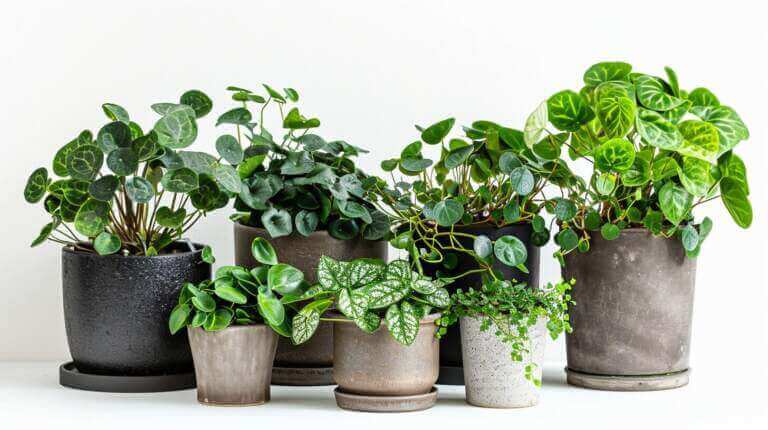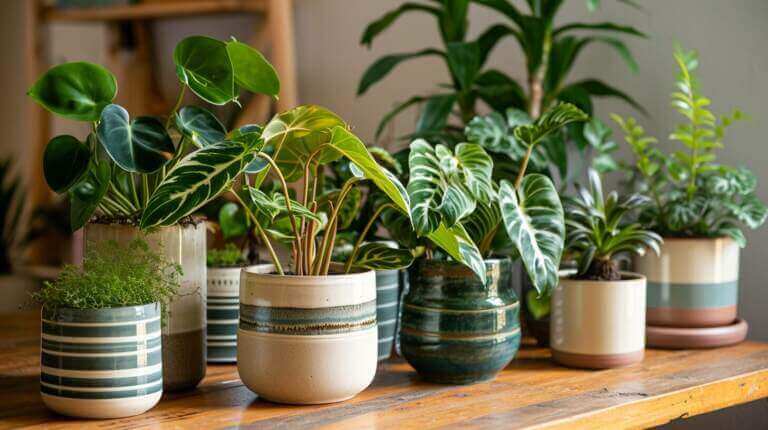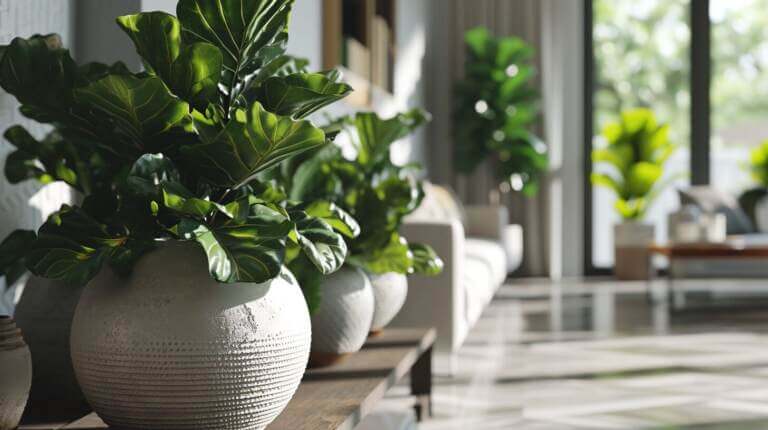Care For Peperomia Hope: Growing Tips to Keep Peperomia Tetraphylla And Rotundifolia Hope Thriving
Peperomia is a tropical plant genus with over 1,500 known species, including the popular Peperomia Hope, also known as Peperomia Verticillata. These plants have thick, fleshy leaves that contribute to their drought tolerance and vigor. Peperomia plants are low-maintenance and can be planted all year long. In this section, we will explore essential care tips to ensure the healthy growth of Peperomia Hope.
Key Takeaways:
- Peperomia Hope, also known as Peperomia Verticillata, is a tropical plant with thick, fleshy leaves.
- Peperomia plants are low-maintenance and can be planted all year long.
- Choosing the right growing conditions, watering, lighting, and temperature are crucial for the healthy growth of Peperomia Hope.
- Peperomia Hope can be propagated through stem cuttings and should be pruned regularly to maintain its shape.
- Common issues with Peperomia Hope, such as leaves curling or dropping, can be resolved by adjusting watering, lighting, and temperature conditions.
Choosing the Right Growing Conditions for Peperomia Tetraphylla Hope
Peperomia Hope, also known as Peperomia Verticillata, is a popular tropical plant that requires specific growing conditions to thrive. By providing the ideal environment, you can ensure the healthy growth and longevity of this beautiful plant.
Lighting: Peperomia Hope thrives in medium to bright indirect light. It is best to place it in front of west or east-facing windows to provide sufficient light without direct sunlight. This will prevent the leaves from getting scorched and maintain their vibrant colors.
Temperature and Humidity: Peperomia Hope prefers warm temperatures ranging from 64°F to 78°F (18°C – 26°C). It is important to protect it from extreme temperature fluctuations to avoid stress on the plant. Additionally, this plant thrives in medium to high humidity levels, so consider misting the leaves regularly or placing the plant on a tray of pebbles and water to create a humid environment.
Potting Mix: Choose a well-draining potting mix that retains moisture without becoming waterlogged. This will help prevent root rot and ensure proper hydration for the plant. A mix of peat moss, perlite, and vermiculite is ideal for Peperomia Hope.
| Type of Peperomia | Care Requirements |
|---|---|
| Peperomia Puteolata | This variety requires similar care to Peperomia Hope, with medium to bright indirect light and regular watering. |
| Peperomia Tetraphylla | Peperomia Tetraphylla, also known as Peperomia Hope, is a specific variety with the same care requirements as Peperomia Hope. |
Watering and Humidity for Peperomia Rotundifolia Hope
Proper watering and humidity levels are crucial for the healthy growth of Peperomia Hope. Understanding the watering needs of this plant and maintaining optimal humidity conditions will help ensure its vitality and vigor.
Watering: Finding the Right Balance
Peperomia Hope should be watered when the top two inches of the soil have slightly dried out. It is important to avoid overwatering, as soggy soil can lead to root rot. To prevent this, I recommend using the “finger test” by inserting your finger into the soil to a depth of about an inch. If it feels dry, it’s time to water your Peperomia Hope. If it still feels slightly moist, wait a few more days before watering.
When watering your Peperomia Hope, make sure to water thoroughly until the excess liquid drains out from the bottom of the pot. This ensures that the entire root system receives moisture. Empty the drainage tray to prevent the plant from sitting in standing water, as this can cause root rot.
Humidity: Creating a Supportive Environment
Peperomia Hope thrives in medium to high humidity levels. If you live in a dry climate or your indoor environment has low humidity, you can increase the humidity around your plant in a few different ways. One method is misting the leaves regularly using a spray bottle filled with room-temperature water. Another option is placing a tray of water and pebbles near the plant, ensuring that the bottom of the pot does not touch the water. As the water evaporates, it creates humidity around the plant.
Lighting and Temperature Requirements for Peperomia Hope
Proper lighting and temperature conditions are crucial for the healthy growth of Peperomia Hope, whether it is grown indoors or outdoors. Understanding the light requirements and temperature preferences of this plant will help you create an optimal environment for its thriving presence.
Peperomia Hope thrives in bright indirect light and should be placed in front of a north or east-facing window. Direct sunlight should be avoided, as it can burn the leaves. This plant’s lush foliage can benefit from medium to bright light levels, but it can tolerate lower light conditions as well. If your Peperomia Hope receives too little light, you may notice the leaves becoming smaller and losing their vibrant coloration.
When it comes to temperature, Peperomia Hope prefers temperatures between 64°F to 78°F (18°C – 26°C). It is essential to protect the plant from extreme temperature fluctuations, as sudden cold drafts or overheating can stress the plant and affect its overall health. Maintaining a consistent temperature within the preferred range will support optimal growth and vitality.
Fertilizing and Propagating Peperomia Hope
Proper care and maintenance are vital for the healthy growth of Peperomia Hope. In this section, I will share valuable tips on fertilizing and propagating this beautiful plant. By following these guidelines, you can ensure the longevity and vibrancy of your Peperomia Hope.
Fertilizing Peperomia Hope:
Peperomia Hope is generally a slow-growing plant and does not require frequent fertilization. However, if you notice that your plant is not thriving or the soil is poor in nutrients, you can consider using a diluted liquid fertilizer. Apply the fertilizer once a month during the growing season to provide the necessary nutrients to the plant. Remember to follow the instructions on the fertilizer packaging and avoid over-fertilizing, as it can cause harm to the plant.
Propagating Peperomia Hope:
One of the exciting aspects of owning a Peperomia Hope is the ability to propagate it and expand your collection. Propagation can be done through stem cuttings, which can be rooted in water or directly planted in well-draining soil. To propagate in water, cut a healthy stem just below a leaf node and place it in a jar of water. Ensure that at least one node is submerged in water. Change the water every few days to prevent the growth of bacteria. Once roots have developed, transplant the cutting into a pot with well-draining soil. Alternatively, you can also directly plant the stem cutting in soil.
It is important to note that propagating plants requires patience and care. Ensure the propagated cuttings receive adequate indirect light and moisture. Over time, the cuttings will develop into new plants, continuing the legacy of your beloved Peperomia Hope.
| Propagation Method | Pros | Cons |
|---|---|---|
| In Water | – Easy to monitor root development – Water provides necessary hydration | – Requires regular water changes – Risk of roots rotting if overwatered |
| In Soil | – Simulates natural growth conditions – Directly establishes roots in soil | – May take longer for roots to develop – Requires careful watering to prevent overwatering |
Common Varieties of Peperomia Hope
Peperomia Hope, also known as Peperomia Verticillata, has become a popular choice among plant enthusiasts. This unique plant comes in various varieties, each with its own distinctive features and appeal. Here are some of the common varieties of Peperomia Hope:
Peperomia Tetraphylla ‘Hope’
One of the most sought-after varieties, Peperomia Tetraphylla ‘Hope’ is a trailing plant with small, round green leaves. Its succulent-like foliage adds a touch of elegance to any space. This variety is known for its compact size and vibrant green color, making it a favorite among indoor plant collectors.
Peperomia Puteolata
Peperomia Puteolata is another stunning variety of Peperomia Hope. Its foliage features a beautiful combination of dark green leaves with silver accents. This unique coloration adds visual interest and makes it an eye-catching addition to any plant collection. With its bushy growth habit, Peperomia Puteolata adds volume and texture to indoor and outdoor spaces.
Peperomia Albovittata
Peperomia Albovittata is a charming variety of Peperomia Hope that stands out with its light green leaves and red stems. This bushy plant adds a pop of color and freshness to any room or garden. Its compact size and low maintenance requirements make it an excellent choice for beginners and experienced plant enthusiasts alike.
These varieties of Peperomia Hope share similar care requirements, making them easy to grow and maintain. Whether you choose Peperomia Tetraphylla ‘Hope,’ Peperomia Puteolata, or Peperomia Albovittata, these plants are sure to bring beauty and life to your indoor or outdoor spaces.
| Variety | Description |
|---|---|
| Peperomia Tetraphylla ‘Hope’ | Trailing plant with small, round green leaves. Succulent-like foliage. |
| Peperomia Puteolata | Dark green leaves with silver accents. Bushy growth habit. |
| Peperomia Albovittata | Light green leaves with red stems. Compact and low maintenance. |
Pruning and Repotting Peperomia Hope
Proper pruning and repotting are essential practices for maintaining the health and appearance of your Peperomia Hope plant. Pruning helps to shape the plant, encourage new growth, and prevent it from becoming leggy. Repotting, on the other hand, allows the plant to have ample space for its roots to grow and thrive. In this section, I will guide you through the steps of pruning and repotting your Peperomia Hope, ensuring its continued well-being.
Pruning Peperomia Hope
Pruning your Peperomia Hope is a straightforward process that can be done in early spring. Start by assessing the plant and identifying any areas that need attention. Look for leggy or overgrown stems, damaged leaves, or any signs of disease or pest infestation.
To prune, use a clean pair of pruning shears or sharp scissors. Make cuts just above a leaf node, as this will encourage new growth from that point and prevent the stems from becoming bare. You can also remove any yellowed or wilted leaves to maintain the plant’s overall aesthetic appeal.
Remember to prune in moderation, as Peperomia Hope is a slow-growing plant. Over-pruning can stress the plant and inhibit its ability to thrive. Regular light pruning will suffice to shape and maintain the plant’s compact form.
Repotting Peperomia Hope
Repotting your Peperomia Hope should be done every two to three years or when the plant has outgrown its current pot. This allows the plant to have enough room for its roots to spread and access fresh nutrients.
Choose a new pot that is slightly larger than the current one, ensuring it has drainage holes to prevent waterlogging. Fill the bottom of the pot with a layer of fresh potting mix, specifically formulated for indoor plants or succulents. Gently remove the Peperomia Hope from its old pot, being careful not to damage the roots.
Place the plant in the new pot, ensuring the roots are spread out evenly. Fill the remaining space with potting mix, pressing it gently to secure the plant in place. Water the plant thoroughly after repotting, allowing the excess water to drain away.
| Pruning Tips | Repotting Tips |
|---|---|
| Use clean pruning shears or scissors to prevent the spread of diseases. | Choose a pot that is slightly larger than the current one to allow room for root growth. |
| Prune in moderation to avoid stressing the plant. | Ensure the new pot has drainage holes to prevent waterlogging. |
| Remove any yellowed or wilting leaves for aesthetic purposes. | Use fresh potting mix formulated for indoor plants or succulents. |
Troubleshooting Common Issues with Peperomia Hope
Peperomia Hope is a resilient plant, but sometimes it can experience a few common issues. One problem you may encounter is leaves curling. This could be due to overwatering, which causes the roots to become waterlogged. To resolve this, adjust your watering routine and allow the soil to dry out slightly between waterings.
Another issue that may arise is leggy growth, where the plant becomes elongated and sparse. This is often caused by insufficient light. Peperomia Hope thrives in medium to bright indirect light, so make sure it is receiving enough light each day. If necessary, move it to a brighter location or provide supplemental grow lights.
If you notice your Peperomia Hope dropping leaves, it could be a sign of stress or environmental changes. This could include sudden temperature fluctuations or a shift in humidity levels. Try to maintain consistent conditions for your plant and avoid placing it near drafts or direct heat sources.
By addressing these common issues and providing optimal care, you can help your Peperomia Hope thrive and maintain its beautiful foliage. Remember to monitor your plant closely, making adjustments as needed, and your Peperomia Hope will reward you with its lush greenery.
FAQ
What type of peperomia is the peperomia hope?
The peperomia hope is a type of peperomia that is known as peperomia verticillata. It’s a delightful peperomia variety that is known for its round leaves and compact growth habit.
What are some care tips for peperomia hope?
Some care tips for peperomia hope include keeping the soil moist but not waterlogged, placing the plant near a window with indirect sunlight, and pruning your plant regularly to promote healthy growth and development.
How does the watermelon peperomia differ from peperomia hope?
The watermelon peperomia, also known as peperomia argyreia, has a striking pattern that resembles the rind of a watermelon. On the other hand, peperomia hope, or peperomia verticillata, is known for its round leaves and compact growth habit.
Is peperomia hope a succulent?
Yes, peperomia hope is considered a succulent because it stores water in its thick leaves. This means the plant can handle periods of drought and prefers to be kept on the drier side.
How do I care for my peperomia plants?
Caring for peperomia plants involves keeping the soil slightly moist, providing indirect sunlight, and maintaining a warm temperature. Make sure to keep an eye out for any signs of pests or diseases, and treat them promptly to ensure healthy plants.
What is the spike in peperomia hope?
The spike in peperomia hope refers to the plant’s inflorescence or flower spike. It’s a sign that the plant is mature and healthy.
How do I prevent root rot in my peperomia verticillata?
To prevent root rot in your peperomia verticillata, avoid overwatering the plant. Root rot is often a result of waterlogged soil. Make sure to keep the soil moist but not soggy.
How can I propagate my peperomia plants?
Propagating peperomia plants can be done through leaf cuttings or stem cuttings. Simply cut a leaf or stem, let it dry for a day or two, then plant it in a pot with well-draining soil. Keep the soil slightly moist and in a few weeks, you should see new growth.







